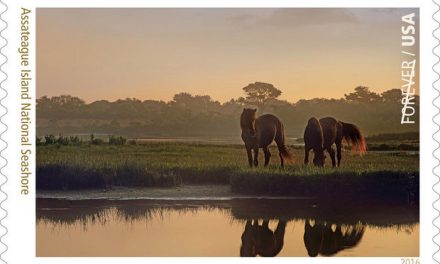by Kimberly K. Egan, MHC Co-President & Co-Chair of the MHC Government Relations Committee (first published in the September 2022 Equiery)
On August 12, The U.S. Congress passed the Inflation Reduction Act of 2022 (IRA), and President Biden signed it into law on August 16. The law contains myriad provisions that will benefit the equine community, such as expanded tax credits for small businesses, increased funding for National Parks, and robust funding for environmental conservation and agricultural programs.
National Parks and Public Lands Conservation and Resilience – Most equestrians in Maryland are trail riders, and many of us ride on National Park Service land along the C&O Canal and in the Catoctin Mountain Park. The IRA authorizes $250 million in new funding for “the conservation, protection, and resiliency of lands and resources administered by the National Park Service . . .”; and another $250 million in new funding “to carry out conservation, ecosystem and habitat restoration projects on lands administered by the National Park Service.” The C&O Canal and Catoctin Mountain could qualify.
Small Businesses Tax Credits – Starting with the 2023 tax year, small businesses will now be eligible for tax credits to cover up to 30% of the cost of converting from fossil fuel power to low-cost solar power. This could include large projects such as putting solar panels on indoor arenas, as well smaller projects like solar-powered well pumps and automatic gates.
Small businesses will also be able to deduct up to $1.00 per square foot for high energy efficiency upgrades. The deduction goes up if the upgrades are performed by workers who are a paid a prevailing wage.
A business should always consult its financial advisor to determine whether it qualifies as a “small business.” Generally speaking, however, virtually every equine- or equine-adjacent business in Maryland should qualify.
Animal feed manufacturers, wooden truss manufacturers, and general leather product manufacturers qualify if they make less than $500,000 a year in average annual receipts. “Hay Farming” and “Horses and other Equine Production” businesses qualify if they generate less than $750,000 in annual receipts. “Farm machinery” and “farm equipment” manufacturers qualify with less than $1.25 million. Landscapers, sports/recreation instructors, and leather repairers qualify with less than $7.5 million. Lawyers qualify with less than $11 million, “sporting goods” retailers with less than $15 million, and accountants and tax preparers with less than $20.5 million. Most construction businesses qualify if they bring in less than $15 million a year.
Environmental Quality Incentives Program (EQIP) – This existing federal program pays owners/operators of agriculture land, including pasture land, for conservation practices such as rotational grazing, nutrient management, and pasture restoration. USDA set aside a total of $2.2 billion in funding for the program for FY 2023. The IRA increases that 2023 funding by $250 million, and then funds future fiscal years with $500 million for 2024, $1 billion for 2025, and $1.5 billion for 2026. Fifty percent of this new funding must go to grazing management practices specifically. Learn more at https://www.nrcs.usda.gov/wps/portal/nrcs/main/national/programs/financial/eqip/.
Conservation Stewardship Program (CSP) – This existing federal program also pays farmers for rotational grazing, nutrient management, as well as sediment control. Farmers must apply and if selected, must enter into a CSP 5-year contract with USDA. The total funding available for the program in 2023 is $1.4 billion. The IRA adds an additional $250 million for FY 2023, and funds future fiscal years at $500 million for 2024, $1 billion for 2025, and $1.5 billion for 2026. Learn more at https://www.nrcs.usda.gov/wps/portal/nrcs/main/national/programs/financial/csp/.
Agricultural Conservation Easement Program (ACEP) – This existing federal program help farmers conserve grazing land and pasture land by funding up to 50% of the fair market value of a conservation easement. The total funding available for 2023 is $450 million. The IRA adds $100 million to FY 2023 specifically for easements “that will most reduce, capture, avoid, or sequester carbon dioxide, methane, or nitrous oxide emissions associated.” The IRA funds those easements for future fiscal years for at $200 million for 2024, $500 million for 2025, and $600 million by FY 2026. Learn more at https://www.nrcs.usda.gov/wps/portal/nrcs/main/national/programs/easements/acep/.
Regional Conservation Partnership Program – This existing federal program funds state projects to help farmers by “improving soil carbon, reducing nitrogen losses, or reducing, capturing, avoiding, or sequestering carbon dioxide, methane, or nitrous oxide emissions . . . .” Funding under the program in 2023 was $300 million. The IRA adds an additional $250 million for FY 2023, and funds future fiscal years at $800 million for 2024, $1.5 billion for 2025, and $2.4 billion for 2026. Learn more at https://www.nrcs.usda.gov/wps/portal/nrcs/main/national/programs/financial/rcpp/.
Assistance to Underserved Farmers and Ranchers – The IRA authorizes $125 million in new funding for “outreach . . . financial training, capacity building training . . . agricultural credit training, and other technical assistance “to underserved farmers . . . including veterans [and] . . . beginning farmers.” The law also authorizes $250 million for “grants and loans . . . to improve land access (including heirs’ property and fractionated land issues) for underserved farmers . . . including veterans, . . . [and] beginning farmers. . . .”
As of 2012, the average age of a farmer in Maryland was 60, regardless of specialty. This funding could help Maryland encourage new farmers and ensure the future of our industry.
* * * *
Although the IRA is now law, USDA and other federal agencies must still promulgate regulations to implement the law’s requirements. Our Government Relations committee will share additional information as it becomes available.












